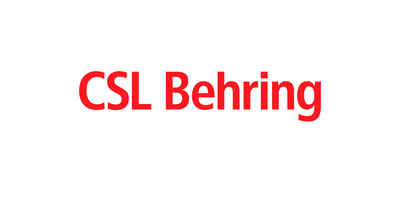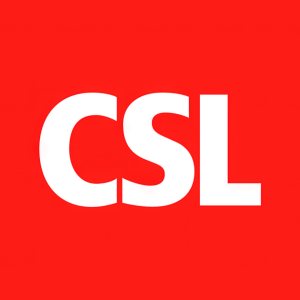FDA Accepts CSL Behring's Biologics License Application for Etranacogene Dezaparvovec for Priority Review
The FDA has accepted CSL Behring's Biologics License Application for priority review of etranacogene dezaparvovec, a gene therapy for adults with hemophilia B. This therapy targets the genetic cause of hemophilia B, potentially allowing for near-normal blood clotting. Clinical trials showed a 64% reduction in annual bleeding rates after treatment. Approval could mark the first gene therapy for hemophilia B, enhancing CSL Behring's commitment to innovative treatments for rare diseases. The review process is expected to take six months.
- FDA accepted Biologics License Application for etranacogene dezaparvovec for priority review.
- Etranacogene dezaparvovec demonstrated a 64% reduction in adjusted annualized bleeding rate in clinical trials.
- If approved, it would be the first gene therapy option for hemophilia B.
- None.
-- If approved, etranacogene dezaparvovec would be the first gene therapy option for people living with hemophilia B
-- This milestone underscores CSL Behring's promise to develop and deliver a truly unique portfolio of patient-focused therapies for people with rare and serious medical conditions
KING OF PRUSSIA, Pa., May 24, 2022 /PRNewswire/ -- Global biotherapeutics leader CSL Behring, a business of CSL, today announced that the U.S. Food and Drug Administration (FDA) has accepted its Biologics License Application (BLA), for priority review, for etranacogene dezaparvovec (also known as CSL222), an investigational gene therapy for the treatment of adults with hemophilia B. Etranacogene dezaparvovec was specifically designed to make near-normal blood-clotting ability possible by addressing the underlying cause of hemophilia B: a faulty gene that causes a deficiency in clotting Factor IX (FIX). Etranacogene dezaparvovec has been shown in clinical trials to significantly reduce the rate of annual bleeds in people with hemophilia B after a single one-time infusion, and if approved, would be the first ever gene therapy treatment option for the hemophilia B community.
"FDA's acceptance of the etranacogene dezaparvovec BLA for priority review is another pivotal milestone in CSL Behring's commitment to deliver innovative treatment options that address unmet needs for people living with rare diseases," said Brahm Goldstein, M.D., Vice President, Research and Development, Hematology at CSL. "For more than 35 years, CSL Behring has been at the forefront of innovation in the treatment of hereditary bleeding disorders, offering the largest portfolio of treatment options for the community including a novel, long-acting prophylaxis FIX replacement treatment. We look forward to continuing to work with the FDA throughout the review process of the BLA and with our partners at uniQure to potentially provide a new transformative treatment option to people with hemophilia B."
The BLA is supported by results from the pivotal HOPE-B trial, the largest gene therapy trial in hemophilia B to date. People with Hemophilia B treated with etranacogene dezaparvovec demonstrated reduced adjusted annualized bleeding rate (ABR) by
Priority review of a BLA is reserved for medicines that, if approved, would be significant improvements in the safety or effectiveness of the treatment, diagnosis, or prevention of serious conditions when compared to standard applications. Upon acceptance for priority review, the FDA goal is to take action on the BLA in 6 months as compared to 10 months for standard review. Previously, the European Medicines Agency (EMA) accepted the Marketing Authorization Application (MAA) for etranacogene dezaparvovec under its accelerated assessment procedure.
"The acceptance of etranacogene dezaparvovec for review by the FDA brings us closer to our goal of delivering a life-changing treatment option for people with hemophilia B," said Bill Mezzanotte, M.D., MPH, Executive Vice President, Head of R&D and Chief Medical Officer for CSL. "Etranacogene dezaparvovec, potentially the first gene therapy approved for hemophilia B, further demonstrates CSL's promise to relentlessly pursue innovative and disruptive technologies when it benefits rare and serious disease patients with unmet medical needs."
Hemophilia B is a life-threatening degenerative disease. People with the condition are particularly vulnerable to bleeds in their joints, muscles, and internal organs, leading to pain, swelling, and joint damage. Current treatment includes life-long prophylactic infusions of FIX to temporarily replace or supplement low levels of the blood-clotting factor.
Gene therapy has the potential to make more normal clotting ability possible in hemophilia B. Gene therapy achieves this with modified non-infectious viruses called "vectors" that can enter certain cells. Vectors carry genetic instructions to specific cells. Once delivered, the new genetic instructions allow the cellular machinery to produce their own stable levels of FIX. A certain type of vector, called an adeno-associated virus, or AAV, dissolves after delivering its genetic instructions. These genetic instructions remain in the target cells, but never actually become a part of a person's own DNA.
Etranacogene dezaparvovec (also known as CSL222, previously known as AMT-061) uses a specific type of AAV, called AAV5, as its vector. The AAV5 vector carries the Padua gene variant of Factor IX (FIX-Padua), which generates FIX proteins that are 5x-8x more active than normal. Preclinical and clinical data show that AAV5-based gene therapies may be clinically effective in a large percentage of hemophilia B patients with pre-existing antibodies to AAV vectors, thereby potentially increasing patient eligibility for treatment.
The pivotal Phase III HOPE-B trial is a multinational, open-label, single-arm study to evaluate the safety and efficacy of etranacogene dezaparvovec. Fifty-four adult hemophilia B patients requiring prophylactic FIX replacement therapy were enrolled in a prospective, six-month observational period during which time they continued to use their current standard of care therapy to establish a baseline Annual Bleeding Rate (ABR). After the six-month lead-in period, patients received a single intravenous administration of etranacogene dezaparvovec at the 2x10^13 gc/kg dose. Patients were not excluded from the trial based on pre-existing neutralizing antibodies (NAbs) to AAV5. A total of 54 patients received a single dose of etranacogene dezaparvovec in the pivotal trial, with 53 patients completing at least 18 months of follow-up. The primary endpoint in the pivotal HOPE-B study was 52-week ABR after achievement of stable FIX expression compared with the six-month lead-in period. For this endpoint, ABR was measured from month seven to month 18 after infusion, ensuring the observation period represented a steady-state FIX transgene expression. Secondary endpoints included assessment of FIX activity and statistical superiority of ABR after dosing.
Results from the pivotal HOPE-B study demonstrated that etranacogene dezaparvovec produced mean FIX activity of 39.0 IU/dL at six months and 36.9 IU/dL at 18 months post infusion. After the six-month lead-in period post-infusion, the adjusted annualized bleeding rate (ABR) for all bleeds was reduced by 64 percent (4.19 to 1.51; p=0.0002) and all FIX-treated bleeds was reduced by 77 percent (3.65 to 0.83; p<0.0001) over months seven to 18. In addition, 98 percent of subjects treated with a full dose of etranacogene dezaparvovec discontinued use of prophylaxis, with an overall 97 percent reduction in mean unadjusted annualized FIX consumption of 257338.8 IU/yr/participant to 8486.6 IU/yr/participant (from lead-in period to months 13-18).
In the clinical trial, the majority of adverse events (80.4 percent) were considered mild. One death occurred during the clinical trial and was considered unrelated to treatment by investigators and the company sponsor. A serious adverse event of hepatocellular carcinoma was determined to be unrelated to treatment with etranacogene dezaparvovec by independent molecular tumor characterization and vector integration analysis. No inhibitors to FIX were reported.
CSL Behring is a global biotherapeutics leader driven by our promise to save lives. Focused on serving patients' needs by using the latest technologies, we discover, develop and deliver innovative therapies for people living with conditions in the immunology, hematology, cardiovascular and metabolic, respiratory, and transplant therapeutic areas. We use three strategic scientific platforms of plasma fractionation, recombinant protein technology, and cell and gene therapy to support continued innovation and continually refine ways in which products can address unmet medical needs and help patients lead full lives.
CSL Behring operates one of the world's largest plasma collection networks, CSL Plasma. The parent company, CSL Limited (ASX: CSL; USOTC: CSLLY), headquartered in Melbourne, Australia, employs more than 25,000 people worldwide, and delivers its life-saving therapies to people in more than 100 countries. For inspiring stories about the promise of biotechnology, visit Vita CSLBehring.com/vita and follow us on Twitter.com/CSLBehring.
# # #
Media Contact
Greg Healy
R&D Communications
Mobile: +1 610 906 4564
Email: greg.healy@cslbehring.com
Etanjalie Ayala
Commercial Operations Communications
Mobile: +1 610 297 1069
Email: etanjalie.ayala@cslbehring.com
![]() View original content to download multimedia:https://www.prnewswire.com/news-releases/fda-accepts-csl-behrings-biologics-license-application-for-etranacogene-dezaparvovec-for-priority-review-301553420.html
View original content to download multimedia:https://www.prnewswire.com/news-releases/fda-accepts-csl-behrings-biologics-license-application-for-etranacogene-dezaparvovec-for-priority-review-301553420.html
SOURCE CSL Behring
FAQ
What is etranacogene dezaparvovec and how does it work for hemophilia B?
When did the FDA accept CSL Behring's application for etranacogene dezaparvovec?
What are the clinical trial results for etranacogene dezaparvovec?
What is the significance of the priority review by the FDA for etranacogene dezaparvovec?








